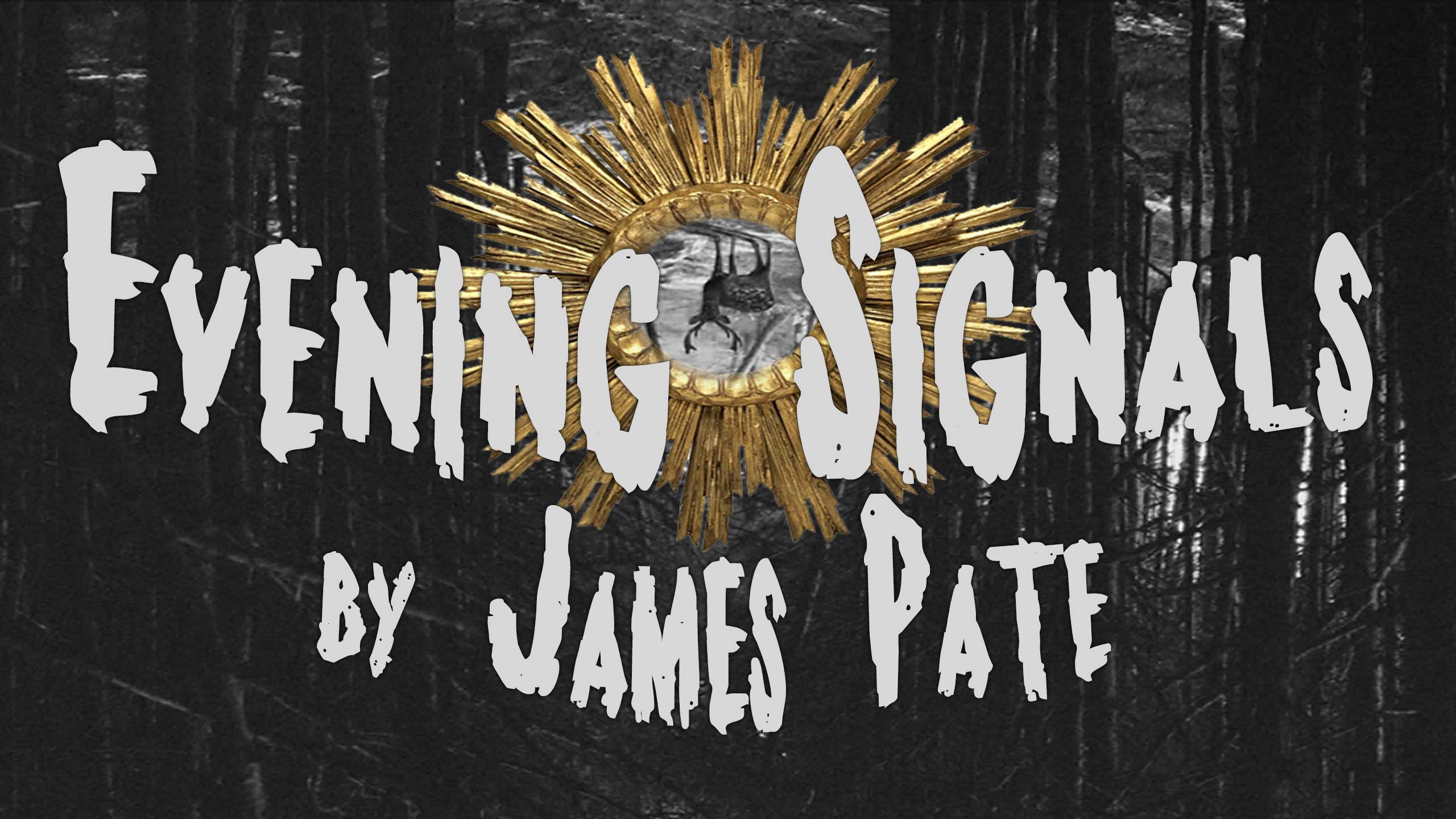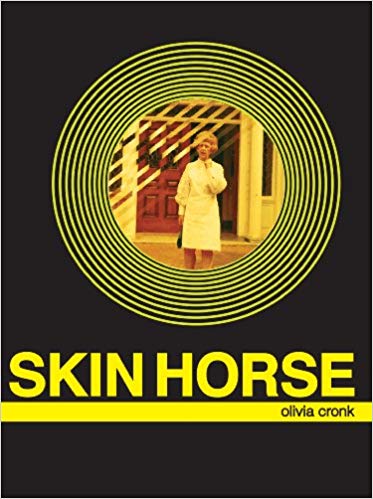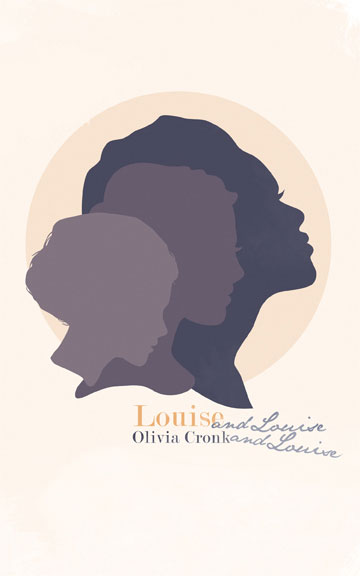Reflections on Olivia Cronk
Evening Signals is a monthly column by James Pate, exploring the Baroque, the Gothic, the Weird and the Fantastique in contemporary poetry and fiction. This month’s column reflects on Olivia Cronk’s Skin Horse and Louise and Louise and Louise.

Reflections on Olivia Cronk
Evening Signals is a monthly column by James Pate, exploring the Baroque, the Gothic, the Weird and the Fantastique in contemporary poetry and fiction. This month’s column reflects on Olivia Cronk’s Skin Horse and Louise and Louise and Louise.
The tentacular are not disembodied figures; they are cnidarians, spiders, fingery beings like humans and raccoons, squid, jellyfish, neural extravaganzas, fibrous entities, flagellated beings, myofibril braids, matted and felted microbial and fungal tangles, probing creepers, swelling roots, reaching and climbing tendrilled ones. The tentacular are also nets and networks…
— Donna J. Haraway, Staying with the Trouble: Making Kin in the Chthulucene
The first lines in Olivia Cronk’s Skin Horse (Action Books) address the reader in a way that is not quite a welcome and not quite a warning. The speaker states, “I did not think you would find / this forest.” It’s unclear if the speaker wanted the reader to discover this forest, which also appears to be the site of the poems, or if the speaker wished the reader had never come upon this place, so that the poems/forest might remain hidden and shadowed. The next line — “How much have you seen?” – heightens this tension, and could be read as either a challenge (how much has the public eye, the anonymous reader, surveyed and mapped this forest) or as a more neutral question of curiosity (the speaker simply wondering what the reader has encountered on these grounds). One reading doesn’t necessarily cancel out the other. The power of the opening lines comes from the subtle tonal balance between a skepticism toward the public eye/readership and a greeting directed toward it.
When I first read Cronk’s Skin Horse several years ago, I kept thinking of Jack Smith’s once-almost-impossible-to-find-but-now-on-Youtube film Normal Love (1963). Smith’s fevered extravaganza, with its opulent costumes and washed-out colors and use of B-movie tropes, takes place in a wooded area, and Cronk’s book, which opens with this implication that it too will unfold in “this forest,” is also a subverted pastoral. Like Smith’s film, Cronk’s collection does not inhabit a patriarchal space of “natural” balance and simplicity (as so often found in the traditional pastoral), but rather sets a stage for the theatrical, the occult and the unnerving. Continuing with the first page of the Skin Horse, the speaker asks if we have seen
My crisp muslin skirt
Nursed to chair
at dinner?
The display of burning orange white
when he and I
and the window
watch your old friends
the naked squids
hung from a tree branch
screaming
who—
Here, the forest gives way/erodes into a dinner where the speaker’s “crisp muslin skirt” is cryptically “nursed to chair,” the enjambment emphasizing the image of the skirt being nursed (and possibly transforming into a chair). From there, the phrasing torques even more, with the display “of burning orange white” being unmoored from any specifics (a sky? a fire?), and yet seeming to covertly relate to “the naked squids / hung from a tree branch / screaming.” The relationship between the “display” and the speaker and the squids is strangely patterned too, with the window not revealing the display but seeming to be another witness (“when he and I / and the window / watch your old friends”). These torques and flourishes, this deliberate jumbling, create a baroque quality where scale and clarity are jettisoned for intensity and blurring. Again, like Smith’s film, with its color-saturated shots (at times so saturated the images melt apart), Cronk’s Skin Horse is a work that shrugs off public notions of perfection for a vision that remains kinetically awry and liminal.
Both Cronk’s Skin Horse and Smith’s Normal Love share kinship with Joyelle McSweeney’s notion of the Necropastoral (in fact, there’s a brilliant section on Smith’s work in McSweeney’s The Necropastoral: Poetry, Media, Occults). McSweeney defines the necropastoral as “the manifestation of the infectiousness, anxiety, and contagion occultly present in the hygienic borders of the classical pastoral.” Rife with lines such as “The Owl head / is worn / at the shoulder some,” and “The wheel fell into the forest, / in the end with pipes / phlox with terror,” Skin Horse delves fully into this shadow-side pastoral.
And the collection also relates stylistically to Donna J. Haraway’s concept of the “tentacular,” with the lines and images splitting off from their initial meaning, creating, to use Haraway’s phrase, “nets and networks.” Skin Horse is a forested site that undercuts the neoliberal language of atomized individuality, ecological domination and (to use Haraway’s phrasing) “human exceptionalism.” Even the formatting of the book emphasizes the collection’s theatricality/tentacularity. All of the pages, with the exception of one, have lines that start halfway down the page, giving the visual effect of the print possessing a kind of undertow, drifting not “up there” but somewhere “down here.” And there are no titles, indicating that Skin Horse is a single poem, an unfurling anti-epic filled with voices and transformations and acts of sometimes Gothic magic (“My nose bled a velvet collar”). This move away from the customary formatting for a poetry collection highlights the book/poem’s performative spirit, so that even this aspect is a sign of how this terrain will not be one of balanced and familiar contours.
Cronk’s second collection, Louise and Louise and Louise, shows a marked divergence from her first book in certain ways – especially in the hybridity of the text. If the syntactical time-slices in Skin Horse are very brief, with every few words morphing quickly into another site/image (and by doing so creating a vibrant montage effect), Cronk’s second collection frequently deals with wider time slices, so that fragments of narrative sometimes appear. Louise blurs poetry with essay, verse with prose. However, the prose is by no means “prosaic.” Louise is every bit as fanciful and neo-Decadent as Skin Horse, and the more seemingly narrative sections are not so much flashes of realism as brief episodes from an extended fever dream. Early in the collection, for example, “a woman paints a Dracula face onto her abdomen, she readies for her performance and squirts perfume onto her dirty cape, she uses her lighter to sharpen her eyeliner.” These lines reveal a “scene,” and could be the first line of a short story, but the moment passes quickly, and the performance for which the woman is preparing never appears – the playacting element of performance being more crucial than whatever narrative the performance itself might enact.
Even the lines that contain a more straightforwardly quotidian aspect (“I had never before heard Portishead or Cat Power. // I wanted to have on better jewelry for the occasion.”) are so enmeshed in the uncanny that they too take on an unsettling register. The speaker highlights this sense of the sinister infusing these instances of apparent realism when she states, “What can I tell you about a crackling wisteria and batik curtains / and the moon-hurt terror of trying to remember things?” In Cronk’s second book, memory is seemingly never natural, never a given, and never in the service of linear story arcs. It’s a creative act of “moon-hurt terror.” Memory as a force of antic fragmentation and not biographical cohesion. “In the fog of it,” the speaker states, “I watch my stories and examine the tiny indigo / flowers on a weed in an alley.” Remaining steadfastly “in the fog of it,” and refusing to let the writing reach for an overly familiar classical-and-scaled clarity, seems to be a guiding principle of Louise and Louise and Louise, and for Cronk’s work overall.

About the Author
James Pate teaches creative writing, literature and philosophy at Shepherd University. His books include The Fassbinder Diaries (CCM, 2013), and Flowers Among the Carrion (Action Book Salvo Series, 2016). His work has appeared in 3:AM Magazine, Black Warrior Review, Burning House Press, Blue Mesa Review, Berkeley Fiction Review, and Occulum, among other places.

About the Author
James Pate teaches creative writing, literature and philosophy at Shepherd University. His books include The Fassbinder Diaries (CCM, 2013), and Flowers Among the Carrion (Action Book Salvo Series, 2016). His work has appeared in 3:AM Magazine, Black Warrior Review, Burning House Press, Blue Mesa Review, Berkeley Fiction Review, and Occulum, among other places.

